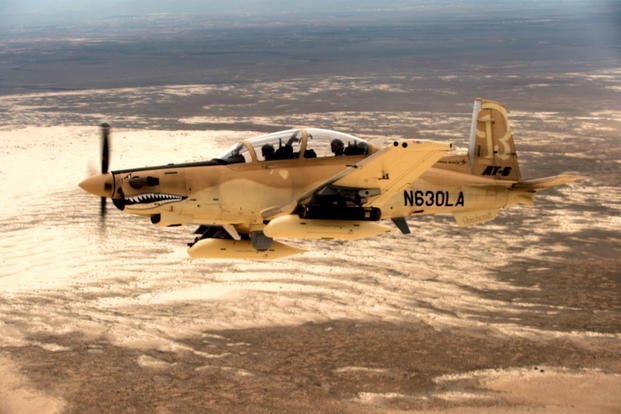Heed the Grail Knight: Can the Air Force Choose Wisely?
Previously, I outlined what I perceived to be the erosion of mission-based culture in the Air Force. The overwhelming response tells me I was not wrong — it was one of the most-read War on The Rocks articles ever. While reaffirmed in a recent article that applied machine learning analytics to surveys, Gen. David Goldfein’s squadron revitalization team offers the most sobering assessment yet. While potentially startling to outsiders, it was no surprise to insiders that the team discovered that “many units struggled with clearly defining and communicating their purpose.” Air Force leaders have made some small strides in the right direction, but more can be done.
The 2018 National Defense Strategy provides a lens to refocus the force, however there is a problem. With more mission than Air Force there are only three possibilities: increase the force, reduce the mission, or find a better way to successfully execute assigned missions. Department of Defense leadership has testified that upwards of 5 percent annual budget growth — above inflation — is required for the next several years to implement the strategy. However, flattening defense spending appears to be gaining undeniable bipartisan support. Fortunately, there is a significant opportunity on the horizon.
Some factions in Congress also appear serious about assessing and debating the roles and missions of the U.S. armed forces. Given the disparity between strategy and resources, so should the Air Force. Rather than start with proposals on what to cut or what to change, I hope to pave the way for a broader conversation among airmen about the importance of such choices. Heed the caution of the Grail Knight from Indiana Jones: “You must choose, but choose wisely, for while the true grail will bring you life, the false grail will take it from you.” The Air Force has been down this road before, and it fundamentally influenced the service, both physically and culturally — it chose poorly...
Rock Bottom
A byproduct of failed compromises in Congress, in 2013 the Department of Defense faced sweeping across-the-board budget cuts from sequestration. Beyond the initial grounding of a significant portion of its combat fighter and bomber squadrons, 20,000 more airmen were cut. However, the most controversial move was the attempt to retire the A-10. Platform and mission aside, the process-of-elimination rationale spoke volumes about the Air Force’s priorities and what it valued as an institution.
As in times past, the Air Force seemed to blunt the impact of their actions with more words. In 2013 the Air Force rolled out its latest rebranding with five core missions: air and space superiority; intelligence, surveillance, and reconnaissance; rapid global mobility; global strike; and command and control. A long and winding road of progress, or was it?
A pilot once testified to Congress that military aviation had four purposes: reconnaissance, fire control for artillery, aggressive action (i.e. fighting), and transportation. While that doesn’t sound fundamentally different than today, realize he testified in 1913 [emphasis added].
What should be clearly understood has become abstract. Today’s Air Force is a sprawling conglomerate of organizations with a wildly diverse spectrum of missions that a majority of airmen don’t even understand...
Choose Wisely
Today, the Air Force has been tapped to re-enter the ring with major competitors. It is currently rethinking the structure of the wing, developing a force presentation model, getting serious about distributed operations away from large vulnerable airbases, and being operationally unpredictable. While notable, all of this is meaningless without experienced aviators, skilled aircraft maintainers, adequate unit support, sufficient parts to keep aircraft flying, and ample munitions to wield the hammer of airpower if and when called upon.
The Air Force cannot afford to wait with bated breath for a fiscal windfall to solve the systemic problems it has. Right now it has too many missions to effectively prioritize, which has diluted both the combat capability, and to an extent, the culture of the service. If everything is a priority, then nothing is. At some point, the resources required mean necessary yet unpopular choices will need to be made.
As Winston Churchill once said, “Gentlemen, we are out of money; now we have to think [emphasis added, CAF?].”
Prioritizing the Air Force’s roles and missions is not just a fiscal necessity — it’s a cultural imperative. The Air Force needs to focus on reducing missions that are on the fringe of its purpose, reinvigorate its inherently innovative base, while being receptive to imaginative new ways to return to its roots of expeditionary airman in order to meet the missions that justify its existence as a military branch.
Change is hard, but required. Let purpose be the guide; task, mission, and culture will follow. Strategy is about choices, and the time before the Grail Knight has come. This time, let’s believe the Air Force will choose wisely, and the true grail will bring its culture back to life.
Maj. Mike Benitez is a U.S. Air Force F-15E Strike Eagle Weapons Systems Officer with over two decades of service in the Air Force and Marine Corps. He is a graduate of the U.S. Air Force Weapons School, a former Air Force legislative fellow in Congress, and a Contributing Editor at War on the Rocks. The views expressed are those of the author and do not reflect the official policy or position of the Department of Defense or the U.S. government.
https://warontherocks.com/2018/11/heed-the-grail-knight-can-the-air-force-choose-wisely/



